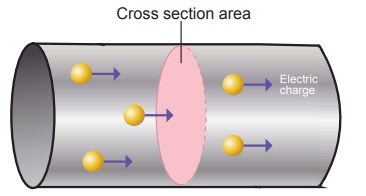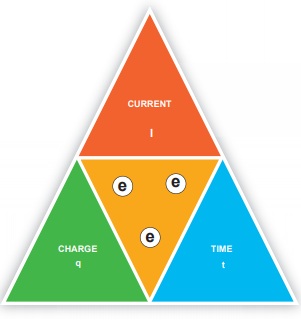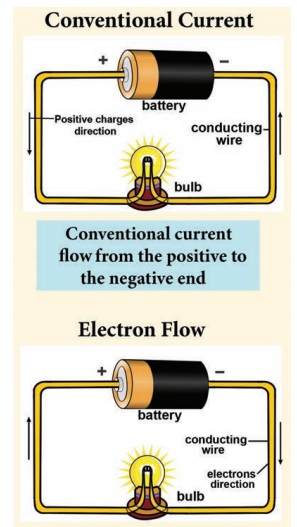Electricity | Term 2 Unit 2 | 7th Science - Electric Current | 7th Science : Term 2 Unit 2 : Electricity
Chapter: 7th Science : Term 2 Unit 2 : Electricity
Electric Current
Electric
Current
The flow of electric charges constitute an
electric current. For an electrical appliance to work, electric current must
flow through it. An electric current is measured by the amount of electric
charge moving per unit time at any point in the circuit. The conventional
symbol for current is ‘I’.

Unit of
Electric Current
The SI unit for measuring an electric current is
the ampere, which is the flow of electric charge across a surface at the rate
of one coulomb per second.
I = q / t
Where I ⇒ current (in Ampere - A)
q ⇒
charge (in coulomb - c)
t ⇒
time taken (in seconds - s)

Worked example 2.1
If 30
coulomb of electric charge flows through a wire in two minutes, calculate the
current in the wire?
Solution
Given :
Charge (q) = 30 coulomb
Time (t)
= 2 min x 60s
= 120 s
Current I = q/t = 30C/120s = 0.25 A
1. Conventional
Current and Electron
Flow

Before the discovery of electrons , scientists
believed that an electric current consisted of moving positive charges.
This movement of positive charges is called
conventional current.
After the electrons were discovered, it was known
that electron flow actually takes place from the negative terminal to the positive
terminal of the battery. This movement is known as electron flow.
Conventional current is in the
direction opposite to electron flow.
2. Measurement
of electric current

Electric current is measured using a device called
ammeter. The terminals of an ammeter are marked with + and - sign. An ammeter must
be connected in series in a circuit.
Instruments used to measure smaller currents, in
the milli ampere or micro ampere range, are designated as milli ammeters or
micro ammeters.
1 milliampere (mA) = 10-3
ampere.
= 1/1000 ampere
1 microampere (µA) = 10-6
ampere
= 1/1000000
ampere
Worked Examples 2.2
If 0.002A current flows through a circuit, then
convert the current in terms of micro ampere?
Solution:
Given that the current flows through the circuit
is 0.002A
We know that
1A=106µA
0.002A
= 0.002 × 106 µA
= 2 × 10-3 × 106 µA
= 2×103µA
0.002A = 2000 µA
Related Topics